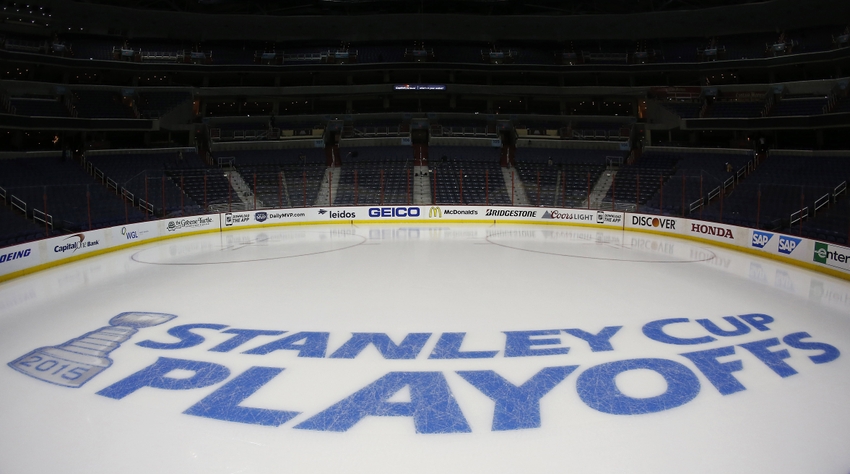Looking For Value In NHL Futures Betting

The NHL regular season is over and we’re ready for the Stanley Cup Playoffs. The Stanley Cup Playoffs is always the most entertaining and action packed in all of sports and it’s also a good opportunity to find attractive betting value. We’ll look at the current futures betting odds and see if we can find some ‘under the radar’ teams that offer good value to make a Stanley Cup run.
First of all, a clarification–when I suggest that certain teams might be a good value I’m not ‘predicting’ that they’ll win the Stanley Cup. I’m not in the ‘prediction’ business nor is any other serious sports bettor. What it suggests is that their chances of winning the Stanley Cup are greater than their current price indicates. For some reason, people have a problem with this concept so I’ll give a quick explanation below. Likewise, when I suggest certain teams that are good values I’m not ‘predicting’ that teams like Washington or Chicago *won’t* win the Stanley Cup. The big distinction here is that more often than not the top teams in any futures market are *overvalued* in terms of line value. Bookmakers have no incentive to give the betting public a great price on Washington. More often than not, lines on favorites like the Capitals are shaded against them right out of the box.
THE CONCEPT OF LINE VALUE:
There is nothing more important to successfully betting on sports than having a thorough understanding of line value. You can know all the players, all the stats and all the trends but if you don’t put the concept of finding value first and foremost in your handicapping you’re making it difficult to be profitable in the long run. This is the ‘buy low sell high’ of sports betting–the greater extent to which you assimilate these concepts the more money you’ll make. It’s that simple.
So what do we mean by line value? I always start with a coin flip to explain it. Let’s say I open a sports book and only take action on coin flips. I’ve got a guy in the back who flips a coin and my customers can wager ‘heads’ or ‘tails’. Now we know that (in theory at least) a coin flip is a 50/50 proposition so if we wanted to give customers ‘true odds’ on a coin flip we’d post:
HEADS +100
TAILS +100
So each side is even money which reflects ‘true odds’ on heads or tails. It doesn’t matter if it’s posted in moneyline (+100), decimal (2.00) or fractional odds (1/1) the theoretical breakeven aka ‘implied probability’ is 50%. There’s a problem with that–a sportsbook that doesn’t make money isn’t going to be in business for very long. What most sportsbooks would do is post the ‘heads or tails’ prop accordingly:
HEADS -110
TAILS -110
That means that no matter which side a customer bets my sportsbook is theoretically getting the best of it and making a small profit. Why is this? Simple. As we learned above the ‘true odds’ of heads or tails is 50%. The implied probability at -110 is 52.38%. So you’re betting on an outcome with a lower ‘true odds’ than implied by the price. The sports betting term for this is ‘underlay’.
Now let’s look at another situation. Say for whatever reason my sportsbook gets pounded with money on ‘HEADS’. Maybe a rumor hits the street that the coinflipper is ‘on the take’, maybe the coin is weighted in such a way to favor heads or whatever. But my sportsbook is writing 5 ‘heads’ tickets for every ‘tails’ ticket. I want to balance it out and attract money to the ‘tails’ side. So I could post a line like this:
HEADS -170
TAILS +150
In this example the ‘tails’ is a great value play. We’ve got a 50/50 proposition and we can get one side of that at +150. At +150, the implied probability is 40%. And that’s a huge overlay.
APPLYING LINE VALUE TO THE ‘REAL WORLD’:
This concept is the same when looking at a ‘real world’ sporting event. It’s a little tougher since unlike the coinflip–which we know is 50/50–there’s no definitive answer for the ‘true odds’ of a certain team winning a game. That doesn’t mean we can’t make an educated and informed guess–and that’s why most serious handicappers start by using some quantitative method to make their ‘own line’ for every game.
Another situation that you’ll find quite a bit doesn’t necessitate coming up with a precise answer for the ‘true odds’ of an outcome. Say we’ve got two evenly matched teams (again, a normative judgement but stick with me) preferably at a neutral venue. One team is a moderate sized favorite. More often than not, there’s value betting on the underdog.
So back to the NHL futures–we’re not looking to ‘pick a winner’. We’re looking for teams that have a chance of winning greater than the lines being offered. Here are the current futures odds with the implied probability of each winning in parenthesis:
Washington Capitals +375 (21.05%)
Dallas Stars +725 (12.12%)
Pittsburgh Penguins +775 (11.43%)
Anaheim Ducks +825 (10.81%)
Chicago Blackhawks +850 (10.53%)
St Louis Blues +850 (10.53)
Los Angeles Kings +900 (10%)
Florida Panthers +1600 (5.88%)
New York Rangers +1600 (5.88%)
San Jose Sharks +1700 (5.56%)
Tampa Bay Lightning +2100 (4.55%)
New York Islanders +2150 (4.44%)
Nashville Predators +2300 (4.17%)
Minnesota Wild +3050 (3.17%)
Detroit Red Wings +3700 (2.63%)
Philadelphia Flyers +3800 (2.56%)
In our next post we’ll discuss these teams and try to identify which offer line value.
